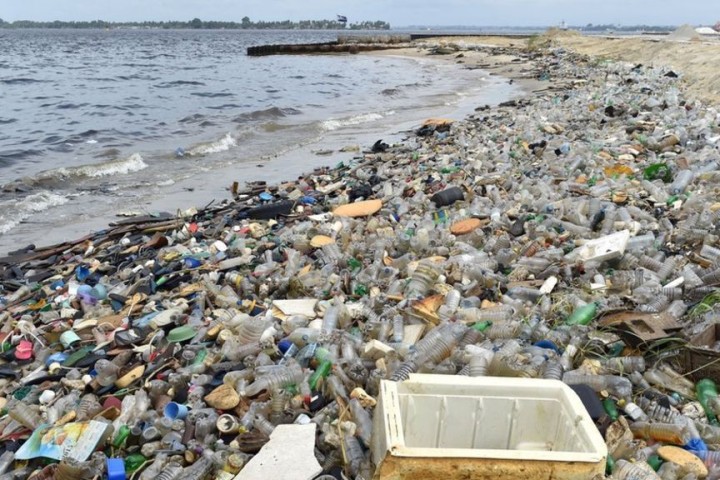PREDICTING THE FUTURE OF PLASTIC POLLUTION AND WHY CLEANUP IS PART OF THE SOLUTION

Our study published yesterday in Science, “Predicted Growth in Plastic Waste Exceeds Efforts to Mitigate Plastic Pollution,” estimates the magnitude of plastic waste entering aquatic environments and evaluates the efficiency of different mitigation strategies. We are proud to have participated in this research in collaboration with an international team of academics and plastic pollution experts from various organizations, led by Dr. Stephanie Borrelle.
THE RESULTS
By considering the different initiatives and commitments currently set forward to address the plastic pollution crisis as well as the projected demand in plastic, our research group sought out to predict plastic emissions into our lakes, rivers, and oceans for this coming decade. The results are alarming: we estimated that today, in 2020, between 24 and 35 million metric tonnes (Mt) of plastic waste was entering the aquatic environment on an annual basis. This is more than double the rate of previous estimations of plastic inputs. Even if every country in the world implemented and adhered to the current global commitments to address plastic pollution, the group predicted that emissions would remain at the same level, leading to as much as 53 Mt leaking into rivers, lakes and oceans in 2030.
In the face of increasing plastic production, the current commitments are not enough to effectively mitigate plastic pollution. These commitments would only have substantial impact, if plastic production growth and use is halted. Therefore, a fundamental transformation of the plastic economy to a circular framework is essential, where end-of-life plastic products are valued rather than becoming waste, and a cleanup strategy larger than grass roots for cleaning what is already in the water.
Our research group investigated different existing mitigation strategies, including reducing plastic waste, improving waste management, and recovery from the environment such as cleanup.
- Reduced plastic use
- Improvement in waste management
- Cleanup solutions
The road to cleaner oceans will be long, as the study’s best-case scenario would require a global reduction of 25 to 40% in plastic waste generation, an increase in the level of waste management from 6 to 60% in low income countries, and systematic cleanup for 40% of plastic emissions.
As long as we use plastic, some of it will inevitably leak into the environment and cleanup must be part of the solution. The task is huge: under our best-case scenario, we calculated that to collect 40% of annual plastic emissions we would need around 750 million people each year participating in manual coastal cleanup campaigns. If plastic continues to release into the environment, these findings emphasize the need for large scale cleanup operations. Therefore, we must develop technologies that intercept and clean plastic from our waterways more efficiently and scaled up.
CURRENT PLASTIC POLLUTION SCENARIO AND THE OCEAN CLEANUP SOLUTIONS
Awareness of the plastic pollution crisis and the backlash on single-use plastic is higher than ever. The number of scientific publications on the extent or impact of plastic pollution continues to increase. Nations are gathering under ambitious global commitments (e.g. Our Oceans, Clean Sea, G7 Plastic Charter, European Union Initiatives…) to curb the problem and try to prevent further damage from being caused.
But on the other hand, plastic production is skyrocketing. In the last 20 years, we have produced more plastic than in the 50 years before. Most of it has been consumed in advanced economies, where citizens use over ten times more plastic than in developing nations. Western countries have shipped most of its plastic waste overseas, depositing mountains of trash into mostly Asian and African countries. In response to this, countries like China have stopped importing plastic waste and an amendment to the UNEP’s Basel Convention was made to regulate plastic waste as a hazardous material.
Here at The Ocean Cleanup, we are focusing on the end spectrum of plastic pollution mitigation strategies and we have recognized that a cleaner ocean will require both a drastic reduction of emissions and wide-scale coordinated cleanup operations. Our main challenge ahead will be to scale up our strategy by deploying Interceptors and cleanup systems worldwide so we can significantly play our part towards a clean ocean by 2040. We have our work cut out for ourselves and there is no time to waste.

